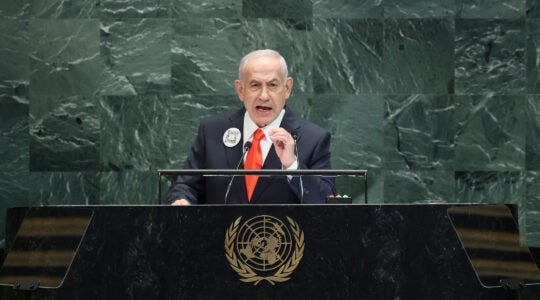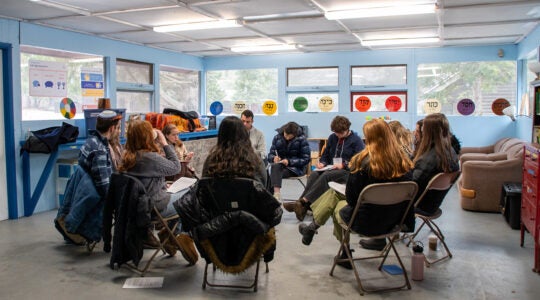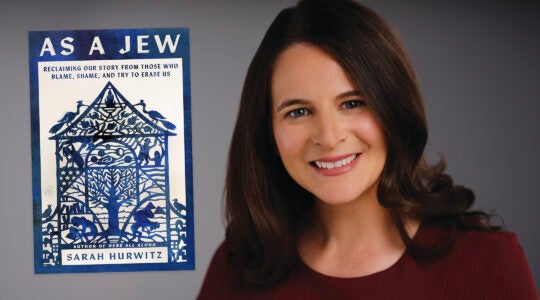Just a few weeks ago, one of America’s most famous Jewish personalities, Natalie Portman, shocked many fans when she backed out on her commitment to accept a prestigious prize in Israel due to political considerations. With all the unfortunate fallout from the Portman boycott, I was struck more deeply by the more recent critical declarations by Birthright founder and prominent Israel supporter Charles Bronfman, who focused on religious tensions between the two most important bases of Jewish life in the world. (See “Why Bronfman’s Patience With Jerusalem Is Waning,” Editor’s column, May 11.)
Bronfman’s call echoes a theme that has become a nearly daily trope in public discourse on the relationship between Judaism in Israel and the diaspora.
Despite more attention being paid to this deteriorating situation, to date little concerted effort has been made to analyze the foundations of the division, and to propose creative and positive ways to reconceive the relationship.
With these critical issues in mind, Bar-Ilan University is launching a new Impact Center for Research on Judaism in Israel and North America. Our aim is to draw from the expertise and intellectual resources of the largest and most diverse faculty of academic Jewish studies in the world, in order to examine this complex dynamic; a struggle that increasingly pits the novel Jewish religious civilization that has developed since the mid-20th century in the State of Israel, in opposition to the rich and diverse North American Jewish religious culture that has continued to grow in parallel.
The complex relationship between Land of Israel-based Judaism and that of Jews in other venues is not a completely new phenomenon.
Our communities share much in common. But the guiding assumption of the new center is that there are also fundamental differences between these two frameworks that are at the foundation of many of the more specific areas of debate. The longer the Jewish religion is attached to a sovereign Jewish state, the more it will advance a religious mode that is distinct from the wide spectrum of voluntary religious ideological streams and collectives that characterize North American Judaism. Thus, before focusing on strengthening the shared parts, the key challenge is to acknowledge the competing versions of modern Judaism that are growing in parallel. Once we do this, we can spawn new tools and methods that will fortify our areas of common interests and values and help us navigate the most explosive issues of contention.
The new center will feature three components: an applied research laboratory built upon Bar-Ilan’s outstanding collection world-leading scholars in the critical scientific study of Judaism and Jewish life; a one-of-a-kind MA program focused on contemporary Judaism in Israel and North America that will cultivate visiting students from North America and the next generation of Israeli public leaders; and the launch of a unique framework for negotiating the most challenging issues of religious conflict.
Bar-Ilan’s legacy as Israel’s tradition-rooted university, along with its rigorous scholarly standing, facilitates strong ties with the widest spectrum of Jewish religious streams both in Israel and in North America, and enable its exceptional “convening power.” In its academic environment, factions and individuals that are public adversaries can engage in the hard work of negotiating workable solutions. Outside the glare of publicity and political jockeying, this setting will instill confidence in the participants, who will recognize that they are meeting within a scientific institution that is not driven by deep-seated biased agendas.
The complex relationship between Land of Israel-based Judaism and that of Jews in other venues is not a completely new phenomenon. Both versions of the Talmud, the Yerushalmi (Jerusalem) and the Bavli (Babylonian), record multiple legal dispensations attributed to consideration for the needs of Temple pilgrims coming from or returning abroad. These legislative strands undermine the popular notion that as long as the ancient Jews were sovereigns in the Land of Israel, the Holy Land was the exclusive center of Jewish religious and cultural life, and that only afterwards Babylon set out on the path that brought forth its great academies and the Babylonian Talmud. The truth is that for hundreds of years prior to the destruction of the Second Temple and hundreds after, Jerusalem and other locations in the Land of Israel, on one side, and Bavel, on the other, existed in parallel as distinct centers. Their relationship was certainly mutually beneficial, but it was also marked by notable tensions and disagreements on issues of religious ideals and values. Nobody denied the competition between Jerusalem and Bavel, nor the fundamental variances between their religious and political constitutions. Rather they recognized that it was in the interest of each side, and ultimately the Jewish people as a whole, that these two pre-eminent communities create viable tools for coexistence and cooperation.
Today, we are once again privileged to live in a world in which the Land of Israel has returned to its foremost place as a wellspring of Jewish spiritual and physical sustenance. At the same time, North America — the Bavel of our times — is a vibrant, populous Jewish civilization whose intellectual and cultural power and creativity contribute profoundly to contemporary Judaism. The new Center for Research on Judaism in Israel and North America at Bar-Ilan is intended to engage this globalized Jewish world with wisdom, analytical sophistication, and the determination to have an impact.
Adam S. Ferziger teaches Jewish history at Bar-Ilan University in Ramat Gan, Israel.
The New York Jewish Week brings you the stories behind the headlines, keeping you connected to Jewish life in New York. Help sustain the reporting you trust by donating today.




